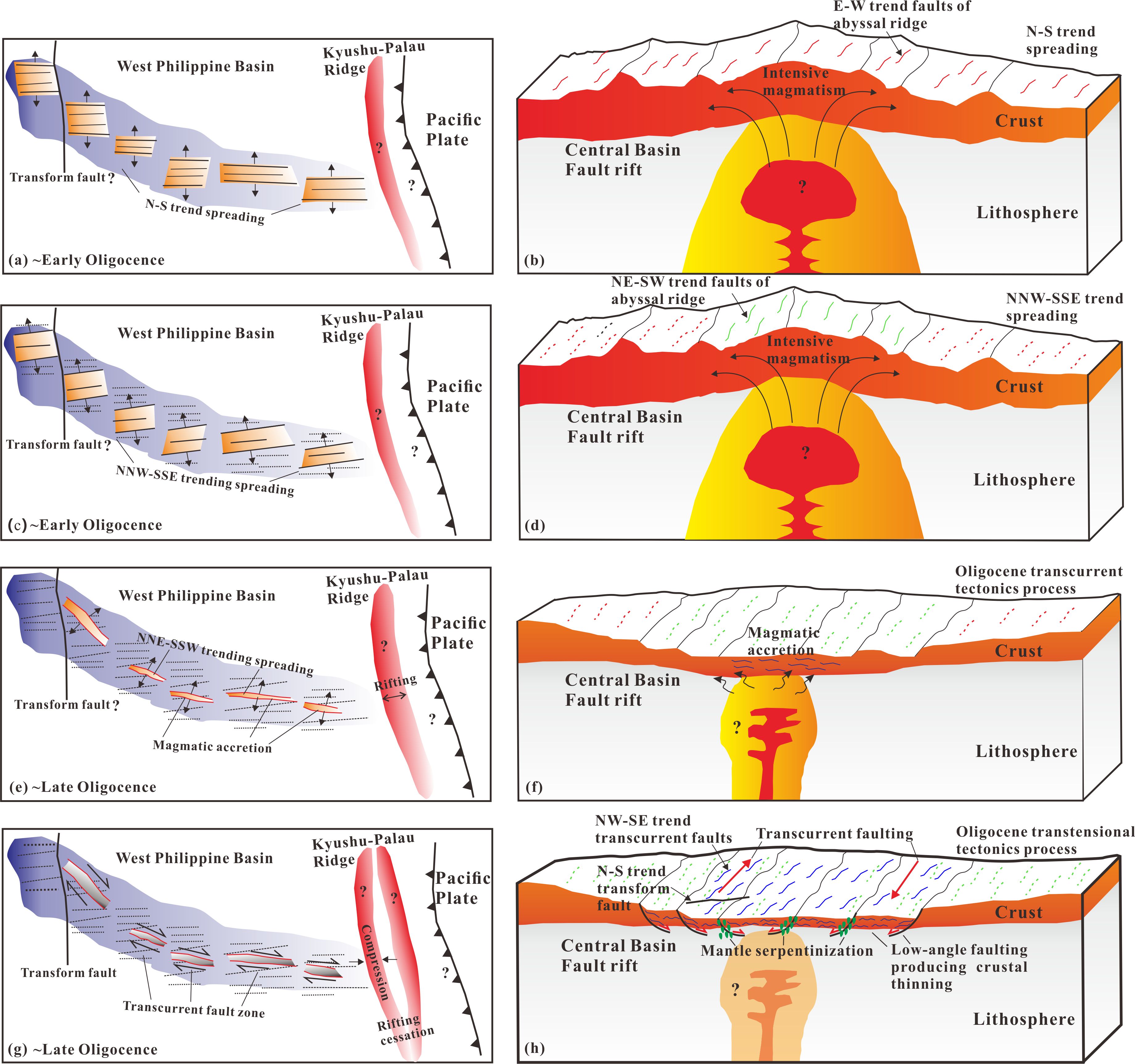Central Basin Fault (CBF), the most striking bathymetric feature of the West Philippine Basin (WPB), records the latest evolution in the Oligocene of this largest basin in the Philippine Sea Plate.
However, the origin and dynamic mechanism of the Oligocene tectonic episode in the CBF rift remain highly controversial because the detailed sedimentary and intracrustal reflectors and upper crustal architecture along the CBF rift have not been constrained due to the lack of observed geophysical data. Moreover, the Oligocene extension episode of the CBF rift was a complex evolutionary process, influenced by both the oceanic crust of the WPB and the Kyushu-Palau Ridge (KPR).
Recently, the research team led by Prof. DONG Dongdong from the Institute of Oceanology of the Chinese Academy of Science (IOCAS) provided new insight into the evolutionary mechanism of the Central Basin Fault rift.
The study was published in Marine and Petroleum Geology on Apr. 19.
Researchers use the latest multichannel seismic data that span from oceanic crust domains, and the CBF rift to the KPR to analyze the sismostratigraphic sequences and the geometries of acoustic substrates. The main horizons with high amplitudes interpreted in the seismic profiles provide indication of both the unconformity within the sediments and top of the basement.
Three groups of prominent intracrustal reflectors have been identified to illustrate the typical low-angle faults and layered intracrustal structures, and the latter display as inclined and mounded features, which are interpreted as the result of tectonic processes, including the later magmatic accretion and transtensional tectonics within the acoustic substrate.
Researchers propose that relatively homogeneous intracrustal reflections probably correspond to an area of abundant magma supply during the major spreading period of the WPB. However, a widespread discrete, layered and high-amplitude intracrustal reflector is present in the CBF rift that can be interpreted as an area of weaker and unstable magma supply after the major spreading period. In the KPR, the anticline that appears within the stratigraphic infills of the basins serves as evidence of transtensional faulting.
The study finally establishes the Oligocene evolutionary model of the West Philippine Basin during a later transcurrent period due to Oligocene magmatic accretion followed by transtensional tectonics.
"Our study implied that the evolution from the West Philippine Basin spreading to cessation was mainly controlled by the variation in the rate of magmatic supply and tectonic processes near the spreading center, which essentially originated from the rollback of the Pacific slab and new back-arc basin formation," said ZHANG Zhengyi, first author of the study.
"How the model evolves from back-arc spreading to cessation currently remains a fundamental question in marine geology. Our study provides one of the best cases to study the transition stage for the evolutionary model of back-arc basins, which can also help to resolve the above question," said Prof. DONG.
The research was mainly supported by the Strategic Priority Research Program of the Chinese Academy of Sciences and the National Natural Science Foundation of China. The scientists and crew of the research vessel KEXUE have provided technical assistance.

The tectonic evolution along the CBF rift from spreading to cessation
Zhang, Z.Y., Dong, D.D*., Sun, W.D., Zhang, G.X. (2022). Oligocene magmatic accretion and transtensional tectonics in the Central Basin Fault rift of the West Philippine back-arc basin: New insights from high-resolution multichannel seismic data. Marine and Petroleum Geology, 141, 105703.
DONG Dongdong
Institute of Oceanology
E-mail: dongdongdong@qdio.ac.cn
(Editor: ZHANG Yiyi)
|
|

Address: 7 Nanhai Road, Qingdao, Shandong 266071, China
Tel: 86-532-82898902 Fax: 86-532-82898612 E-mail: iocas@qdio.ac.cn


